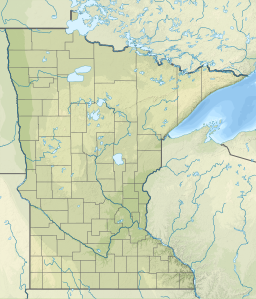| Revision as of 01:26, 6 June 2021 edit2600:1014:b048:64ee:0:54:6e28:7e01 (talk) Changed the location of Star Island and Lake Windigo to Cass County,Mn not Beltrami County MN.Tags: Mobile edit Mobile web edit← Previous edit | Revision as of 01:16, 2 October 2021 edit undoCailanMacLaren (talk | contribs)53 editsm A previous edit was not grammatically correct and added the term “cryptid” — an unneeded and questionable specificity — misspelled as “cryptoid”Tags: Visual edit Mobile edit Mobile web editNext edit → | ||
| Line 39: | Line 39: | ||
| Star Island is itself a historical site. The village of ], ]'s guide to ], was located on the island. The Ojibwe people flourished in the area up until the arrival of American and European settlers. In the early 1900s, parts of the island were sold to private entities, while the majority of the island entered the protection of the federal government as a national forest. It remains this way to this day. | Star Island is itself a historical site. The village of ], ]'s guide to ], was located on the island. The Ojibwe people flourished in the area up until the arrival of American and European settlers. In the early 1900s, parts of the island were sold to private entities, while the majority of the island entered the protection of the federal government as a national forest. It remains this way to this day. | ||
| The lake derives its name from the ] of ] |
The lake derives its name from the ] of ], a malevolent, cannibalistic spirit that could possess people and inspire cannibalism, particularly during times of famine. ] ceremonies were often performed during times of famine to remind the people to be wary of the ] spirits. | ||
| == References == | == References == | ||
Revision as of 01:16, 2 October 2021
| Lake Windigo | |
|---|---|
  | |
| Location | on Star Island in Cass Lake, Leech Lake Indian Reservation, Cass County,MN |
| Coordinates | 47°25′07″N 94°34′13″W / 47.41861°N 94.57028°W / 47.41861; -94.57028 |
| Basin countries | United States |
| Surface area | 199 acres (81 ha) |
| Max. depth | 25 ft (7.6 m) |
| Surface elevation | 1,302 ft (397 m) |
Lake Windigo is a small lake on Star Island in northern Minnesota, United States. The lake covers a total of 199 acres (80 hectare) and reaches a maximum depth of 15 feet (4.6 m). The littoral zone is 129 acres (52 hectare). Due to its shallow depth and subsequent abundant plant and algae growth, water clarity extends 6 feet (1.8 m). The lake hosts small populations of northern pike and walleye and large communities of panfish. Access to Lake Windigo is by a short portage from Cass Lake on the north side of the island. The lake is best navigated by canoe, rowboat, or other small watercraft.
Windigo is located in Star Island in Cass Lake. In the television series Ripley's Believe It Or Not, the lake was designated as being the only lake within a lake in the Northern Hemisphere. There are a few other such lakes. It is, however, the only spring fed lake within a river fed lake in the northern hemisphere.
Star Island is itself a historical site. The village of Ozaawindib, Schoolcraft's guide to Lake Itasca, was located on the island. The Ojibwe people flourished in the area up until the arrival of American and European settlers. In the early 1900s, parts of the island were sold to private entities, while the majority of the island entered the protection of the federal government as a national forest. It remains this way to this day.
The lake derives its name from the Wendigo or Windigo of Algonquin mythology, a malevolent, cannibalistic spirit that could possess people and inspire cannibalism, particularly during times of famine. Wendigo ceremonies were often performed during times of famine to remind the people to be wary of the Wendigo spirits.
References
- MN DNR Lake Information
- "Chippewa National Forest" (PDF). (508 KB)
- U.S. Geological Survey Geographic Names Information System: Lake Windigo